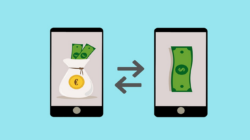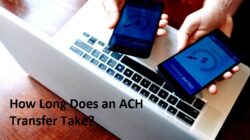
Can you use credit cards at ATMs? Yes! You can use multiple credit cards to withdraw money from an ATM. But, it’s generally not a good idea. You may incur higher fees and APRs. So, before using your card at an ATM, understand exactly what you will be charged and how much it will cost.
You’ve probably been there at least once – standing at an ATM only to realize you left your debit card at home. Maybe you need more money than you have in your bank account. You may even be traveling and not be able to use your debit card at the local train station. Whatever the reason, you must have wondered, can you use a credit card at an ATM? If you need to use your credit card at an ATM to withdraw cash, it’s important that you understand the fees associated with that transaction.
Cash advance via ATM is not very common, but it can be done. In fact, you can do this in many parts of the world as well as nationally; you don’t have to be in your home country or state to get cash advance via an ATM. Just because you can doesn’t mean you have to.
Table of Contents
Using a credit card at an ATM
Can you use credit cards at ATMs? Using a credit card at an ATM to withdraw money is similar to withdrawing money with a debit card. Find an ATM near you, preferably one that’s on your credit card issuer’s network, and doesn’t charge a fee.
Once you have selected the ATM you want to use, insert your credit card. The ATM may ask for the PIN associated with this card. Since you don’t need to use a PIN when making purchases with a credit card, you probably don’t know it. You can work around this by calling the number on the back of your credit card and resetting your PIN.
After entering your PIN, you can enter the amount of cash you want to receive – making sure you don’t exceed your card’s cash advance limit – and the ATM will pay you.
An ATM cash advance can be an extremely convenient way to get cash when you need it, wherever you are. However, unlike standard debit cards or ATM transactions, using your credit card this way can lead to other side effects that you may not find convenient. The Cost of Using a Credit Card at
ATM There are a number of ways that credit card issuers, banks, and even ATM companies can make money from your transactions. ATM Fee
Like a debit card, a credit card is part of a specific ATM network based on the card issuer. Usually, using a credit card to withdraw money from an out-of-network ATM means you’ll have to pay fees at the ATM network.
Additionally, businesses that operate ATMs on their premises may charge consumers additional fees for using ATMs. These fees alone can increase your transaction costs by several dollars if you pay two separate fees.
Cash advance fees Although you do not have to pay ATM fees, you will still incur other fees. Credit card companies treat this as a cash advance when you use your card at an ATM, which means you’ll have to pay any applicable cash advance fees if you withdraw cash using their credit card. me.
You can see exactly how much you will pay by looking at your credit card information. This is where credit card companies, by law, have to be very clear about what fees will be charged for using your card.
Generally, you will pay either a flat rate or a percentage of the cash advance, whichever is greater; Expect to pay something like $5 or 3% of the advance. For example, when withdrawing $500, you can pay up to about $15.
This may not seem like much, but it can lead to higher costs if you’re making a small cash advance. If your card charges $5 or 3% for a cash advance and you only withdraw $20, you will incur a $5 fee, equivalent to 25% of your advance. This means that small withdrawals can be extremely expensive on a percentage basis. Interest
The final way credit card issuers make money on cash advances is by paying interest. Cash advance rates tend to be 4% to 5% higher than purchase rates. In some cases, the APR can reach 27.49% or more, even if the APR for your purchase is much lower.
Many cards also start charging interest on cash advances immediately, instead of waiting for the statement to close and become due. This means you could be charged unexpected interest on your bill if you received a cash advance at the beginning of the statement period and didn’t pay it back immediately. It can also make your monthly payments much less effective at reducing your balance if you only pay the minimum amount due each month.
What is a cash advance?
A cash advance is a short-term loan that involves using your credit card to withdraw cash. You can get a cash advance at most ATMs or financial institutions.
Cash advances are handled differently from regular credit card transactions. Most charge an upfront fee as a percentage of the total amount requested, with a minimal fee if your withdrawal is small enough.
Cash advances also tend to carry a much higher interest rate than regular purchases, and they often don’t have a grace period, so you start to incur interest charges upfront.
There is, of course, a limit to how much you can withdraw on a cash advance. You should be able to find it in your card terms along with other credit line details. Reasons why a cash advance is a bad idea
Cash advance transaction fees are high: You will usually pay a fee based on the amount you borrow. The terms of your credit card agreement usually say something like “$10 or 5% of each cash advance, whichever is greater”. This means that you will have to pay a flat rate of $10 when you borrow up to $200, or 5% of what you borrow if it exceeds $200.
No grace period: When you make a purchase with most credit cards, the credit card company won’t start charging interest right away. Cash advance by credit card is different. When you borrow money from your credit card issuer, they start charging you interest right away, so financing fees add up quickly. Learn more about credit card grace periods here.
High Interest Rates: While not as high as some alternatives, such as short-term loans, the APR (annual percentage rate) on cash advances is often much higher than on loans. credit purchased with a regular card. Around 25% is not unusual. Remember that there is no grace period. So you will immediately start earning interest at this insanely high rate.
Bad Signs for Lenders: If your credit card issuer sees you using cash advances, you could be flagged as a subprime borrower according to their risk model. That’s because they know people use cash advance when they’re desperate. If they consider you risky, you may not get a higher line of credit or good terms from that bank in the future. They may even charge a higher interest rate on your balance in the future or close your account.
Reduce Credit Usage: Your cash advance balance is added to your credit card debt. This debt shows up on your credit reports. In general, the higher your credit card debt is relative to your total available credit, the lower your credit score will be. If you already have a high credit card balance against your credit limit, a cash advance can have a significant negative impact on your credit score.
Can You Use Credit Cards at ATMs?
Can you use credit cards at ATMs? Yes! Almost all credit cards allow you to borrow money with cash, but that’s probably not a good idea. After all, high fees and interest are a great way for issuers to make money, as you can see in this example.
Check the Cardholder Agreement that came with your card to make sure. If you see a Cash Advance APR and Cash Advances Fee, then you can probably get a cash advance with that card. It might look something like this: terms and fees for cash advances
Check your credit card statement. If you see a cash advance credit line or cash advance credit limit, that`s the maximum amount of cash you can take out. It`s important to know what this is so you don`t try to withdraw too much. The credit limit for cash advances is usually smaller than your card`s credit limit for regular purchases. Cash advance credit limit
If you don’t have your credit card terms or statement ready, you can call the number on the back of your card to ask if your account allows cash advance or not and limit your cash advance to your credit line.
Otherwise, provided you have enough credit available, the only thing that might prevent you from getting a quick advance is if you don’t know your credit card PIN.
You may have received a PIN when you initially received your new credit card in the mail, or you may have had the opportunity to create your personalized PIN online or by phone.
If your credit card has a chipandPIN function (chipandPIN cards are not common in the US, but very common in Europe), you can use the same PIN that you would use to make purchases, although Cash advance PIN may be different. Contact the publisher for more information.
If you are not at all sure about the status of your PIN, don’t worry. Depending on your card issuer, you may be able to log into your issuer’s online account portal or mobile app to generate a PIN, request a new PIN, or view/request your current PIN. Just keep in mind that immediate access to your PIN is not possible for security reasons.
Alternatively, you can always call the customer support number on the back of your credit card for assistance.
Don’t want to struggle to get your PIN? You may be able to get a cash advance by visiting a brickandmortar bank associated with your credit card issuer (though the availability of this service depends on the issuer). You`ll have to show the teller your card and a valid, governmentissued ID.
Can You Use a Credit Card at an ATM Without PIN
Can you use credit cards at ATMs without PIN? Now, for those of you who don’t have a PIN, you can still get some cash. All you have to do is go to your bank teller and request a cash advance on your credit card. You’ll need to bring a credit card, and you’ll also need a government-issued photo, such as your driver’s license or passport.
Some credit card companies will issue what is called access control or convenience check. You can use them to withdraw money to your credit card. These blank checks are based on your line of credit, not your checking account. You may be wondering how to get these checks. Some credit card issuers will automatically send them, others you’ll need to claim them before they’re sent to you. The bad thing is that these checks have a high APR, so be aware of that before cashing in.
Need another way to get money on your credit card? This is called the initial “refund”.
Walmart would be a prime example as they offer up to $100 cashback. All you have to do is take your credit card to Walmart, buy something small, and get up to $100 back.
It’s important to note that all credit cards are different, and some cards won’t trigger a cash-back option when you pay. Think it’s only for debit cards? Accepted, in some places you will need to find one that gives you a refund option when you go to pay for an item. I use my Chase credit card at a local gas station and can get cash back so you can also try the local stores.
How to withdraw money from an ATM with a credit card?
Can you use credit cards at ATMs? How fix it? Withdrawing money from an ATM with a credit card is a simple process. It’s like withdrawing money from an ATM with a debit card with just a few minor differences.
Check your most recent account statement to see how much you can withdraw. This may vary depending on the card’s spending limit, or the card may have different cash advance limits.
- Go to the ATM and insert your credit card.
- Enter the credit card PIN (call the number on the back of the card for the credit card PIN or to create one).
- Select the appropriate options if offered: “cash out” or “cash advance”.
- If prompted to choose between “credit” or “debit”, select “credit”.
- Enter the amount to withdraw.
- Accept all fees such as ATM transaction fees and cash advance fees.
- Complete the transaction and withdraw.
Cash Advance Alternatives
Be sure to consider all options before making a cash advance. Below the alternatives beside of the answer of can you use credit cards at ATMs.
- Use a debit card instead of a credit card to withdraw money from ATMs located in the bank’s network. This way, debit card holders will avoid cash withdrawal fees.
- Payment apps like Venmo or Cash App are a good alternative for transferring money to friends or businesses. They accept credit card transfers for a small fee. These fees will generally be less than the fees and interests associated with cash advances.
- Consider applying for a personal loan if you need a large sum of money to pay for large expenses like rent or medical bills. Personal loans typically have much lower interest rates than cash advances and many of the APRs of credit cards (average personal loan interest rate is 9.41 as reported by Experian in 2020).
- Borrow money from friends or family members. While it is often risky to ask friends or family for financial assistance, as long as the borrower is able to repay the loan in a timely manner, it can be easier and cheaper than making an advance. face.
Beside the Quiz “Can you use credit cards at ATMs,” Can You Use a Credit Card to Pay Off Another Credit Card
You can do a balance transfer in which you move high-interest debt to a new card with a lower APR. But, if you want direct monthly payments, typically no.
Key points:
- When you transfer a balance, you can use one credit card to pay for another.
- You cannot pay the monthly installments of one card directly with another card.
- It is possible to advance cash on one credit card to pay for another, but that is not a good idea.
It’s often not possible to pay your credit card bill with another credit card immediately and for free. If you’re looking to earn more rewards or get into debt, don’t count on this option.
And while it is possible to pay indirectly by credit card with a cash advance – for example, by using another credit card to withdraw money from an ATM – this would be extremely expensive and inefficient, that would be a bad choice.
But there’s at least one way to use one card to pay for another and stand out: you can do a balance transfer, essentially transferring debt from one card to another. However, rules and restrictions apply.
On balance transfer: Yes
You can save interest by transferring your debt from a high-interest credit card to a card with a 0% APR introductory offer or a low promotion. .
With a few exceptions, credit cards typically charge a balance transfer fee of 3% to 5% on the amount transferred. The balance transfer is also not instantaneous; they can take weeks to pass. Also, they usually don’t earn rewards.
For cards with long introductory periods with 0% APR for balance transfers and low or no balance transfer fees, check out NerdWallet’s Best Balance Transfer Credit Cards.
How Balance Transfers Work?
For Direct Monthly Payment: No
Paying your monthly credit card bill with different credit cards is usually not an option. Don’t expect to easily earn points and miles in an endless cycle or quickly get more time to pay off debt this way.
Credit card issuers often ask you to pay your credit card bill with your bank account when you pay online or by phone. You’ll need to provide information like account and routing numbers – and you can’t just substitute credit card numbers.
These restrictions exist in part because issuers want to limit their risk. A customer paying for one credit card with another may be more likely to default.
After getting a cash advance: Yes, but it’s not good idea
You can use a credit card to withdraw money from an ATM and then use that money to pay for another map. But such a transaction – a cash advance – often comes with high fees and high interest rates, making it an extremely expensive way to get some quick cash.
This is also not the way to go if your goal is to reap rewards. Cash advances generally do not earn rewards. And even if they did, the fees and high interest rates that come with it will likely eclipse the value of the benefits you could earn.
What to do if you can’t pay your minimum?
Can you use credit cards at ATMs? When money is tight, the inability to pay off one credit card with another can leave you wondering how to cover your minimum payment – especially when your credit card payments go down to second place and bad things happen if you don’t pay those bills like rent, car and babysitting.
If this is your case, this is the place to start.
- Assess your situation. Review your credit card accounts and your overall budget. Knowing how much you owe, the interest rate, and how much you can afford to pay each month can give you a better idea of how bad your cash shortage is and help you decide how to prioritize each bill.
- Communicate with your creditors. You may qualify for a credit card assistance program that can reduce your monthly payments and provide temporary relief. This can be a good solution if your money problems are temporary and you think you can pay off your balance with more time or adjusted terms.
- For chronic money problems, consider other options. If you constantly struggle to pay the minimum and feel overwhelmed with debt – for example, if debt (not including mortgage) accounts for more than 40% of your income and you have no way of paying it off in 5 year – bankruptcy may be your best option. Consider consulting a bankruptcy attorney to review your situation.
Key: Can you use credit cards at atms
Gambar: 2






